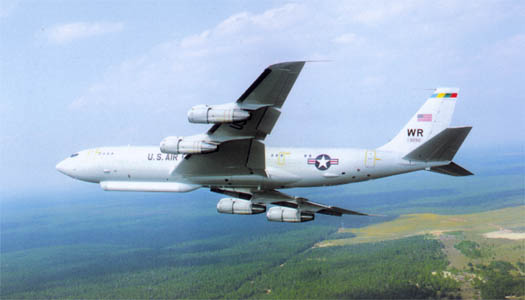 |
 |
The Joint Surveillance and Target Attack Radar System (JSTARS) is a joint development project of the US Air Force and Army which provides an airborne, stand-off range, surveillance and target acquisition radar and command and control centre.
In September 1996, JSTARS was approved for full rate production for 14 aircraft. Eight have been delivered. The 93rd Air Control Wing operates the JSTARS aircraft at Robins Air Force Base in Georgia.
JSTARS
provides ground situation information through communication via secure
data links with air force command posts, army mobile ground stations and
centres of military analysis far from the point of conflict. JSTARS provides
a picture of the ground situation equivalent to that of the air situation
provided by AWACS. JSTARS is capable of determining the direction, speed
and patterns of military activity of ground vehicles and
helicopters.
JSTARS was first deployed in Operation Desert Storm in 1991 when still in development, and has since been deployed to support peacekeeping operations in Bosnia-Herzegovina and during the Kosovo crisis.
On a standard mission the aircraft has a crew of 21 with three flight crew and 19 systems operators. On a long endurance mission the aircraft has a crew of 34, with 6 flight crew and 28 system operators.
AIRCRAFT
The Boeing 707-300 series aircraft is the JSTARS airframe. The aircraft are remanufactured at Northrop Grumman in Lake Charles, Louisiana, then transferred to the Battle Management Systems Division in Melbourne, Florida where the electronics are installed and tested.
The propulsion system of the JSTARS aircraft consists of four Pratt and Whitney JT3D-3B turbojet engines, each providing 18,000 pounds of thrust. The aircraft has a flight endurance of 11 hours or 20 hours with in-flight refuelling.
RADAR
The radar system is produced by Northrop Grumman Norden Systems. A 24 ft antenna is installed on the underside of the aircraft, which is mechanically swivelled and pointed to scan in elevation, and scans electronically in azimuth to determine the location and heading of moving targets.
The
main operating modes of the radar are wide area surveillance, fixed target
indication, synthetic aperture radar,
moving
target indicator and target classification modes.
The
US Air Force has awarded Northrop Grumman a contract to develop the next
generation JSTARS as part of the Radar Technology Insertion Program (RTIP).
The new much more powerful radar will be an electronically scanned 2-D
X-band active aperture radar which will have a helicopter detection mode
and inverse synthetic aperture (ISAR) imaging capability, as well as MTI
(moving target indicator) mode, allowing realtime imaging
of
moving objects.
COMMAND AND CONTROL
JSTARS aircraft have 17 operations consoles and one navigation/self-defense console. A console operator can carry out sector search focusing on smaller sectors and automatically track selected targets. Fixed high value targets are detected through synthetic aperture radar (SAR).
Signal processing techniques are implemented through four high-speed data processors, each capable of performing more than 600 million operations per second. Processed information is distributed via high-speed computer circuitry to tactical operators throughout the aircraft.
In
1997, the US Air Force awarded Northrop Grumman two contracts for a computer
replacement program to take advantage of the latest commercial off-the-shelf
technology (COTS). The program will integrate new Compaq AlphaServer GS-320
central computers that will be significantly faster than the original system.
The programmable signal processors will be replaced and a high-capacity
switch and fibre-optic cable will replace the copper-wired workstation
network. The Computer Replacement Plan (CRP) has completed EMD testing
and is expected to enter
production
in 2001.
COMMUNICATIONS
JSTARS has secure voice and datalinks to the Army's ground command and communications stations and to the Air Force command centres. Voice communications systems include 12 encrypted UHF radios, two encrypted HF radios, three VHF encrypted radios with provision for Single Channel Ground and Airborne Radio System (SINCGARS) and multiple intercom nets.
The
digital datalinks include a satellite communications link (SATCOM), a surveillance
and control datalink (SCDL) for transmission to mobile ground stations,
and Joint Tactical Information Distribution System (JTIDS). The JTIDS provides
tactical air navigation (TACAN) operation and Tactical Data Information
Link-J (TADIL-J) generation and processing. The Cubic Defense Systems SCDL
is a time division multiple access datalink incorporating flexible frequency
management. The system employs wideband frequency hopping, coding and data
diversity to achieve robustness against hostile jamming. Uplink transmissions
use a modulation technique to determine the path delay between the ground
system module and the E-8 aircraft.
 |
 |
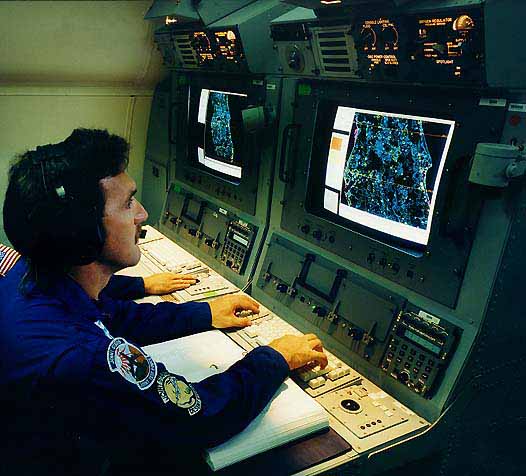 |
 |
 |
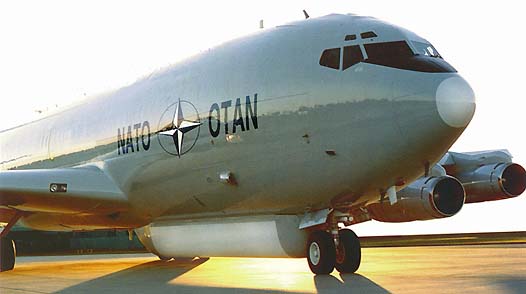 |
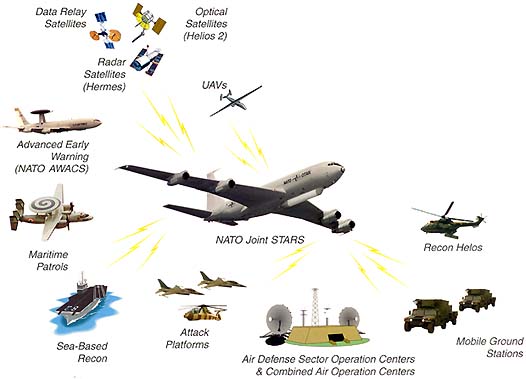 |
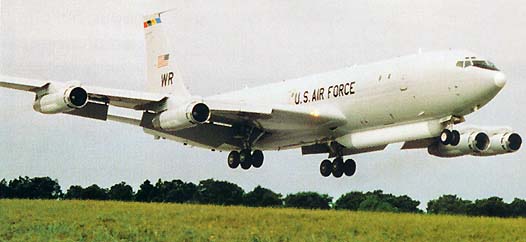 |
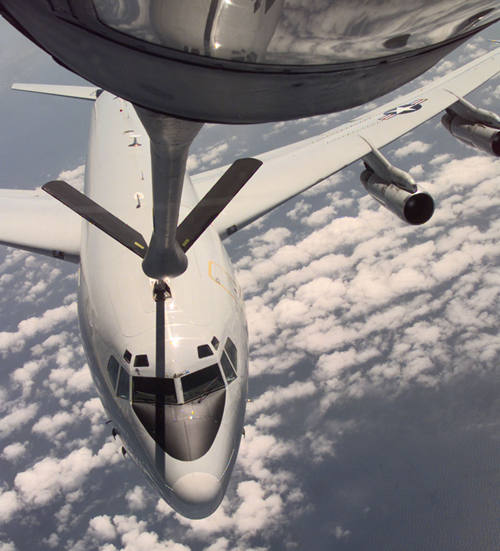 |